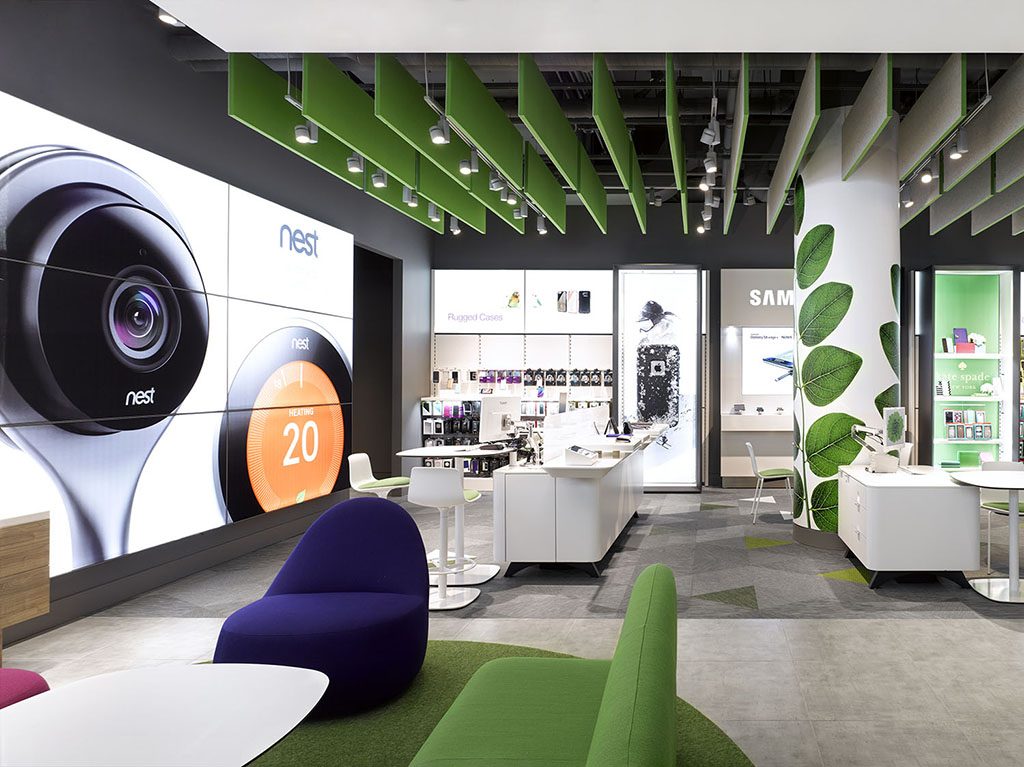What Are 8 Common Retail Lighting Mistakes?
 Research shows lighting impacts how customers perceive a store’s quality, space and character. It influences how much time they spend shopping, where they stroll, what items they look at, and how likely they’ll go from “just browsing” to buying.
Research shows lighting impacts how customers perceive a store’s quality, space and character. It influences how much time they spend shopping, where they stroll, what items they look at, and how likely they’ll go from “just browsing” to buying.
Most architects, designers and building owners are aware of lighting’s ability to influence. Still, many get it wrong.
The reasons vary. Maybe their lighting doesn’t emit the right type of color. Perhaps it doesn’t subtly guide customers where to look and what to buy. The environment could be dull and unattractive. And because the fixtures are an older technology—installed in a spot where it’s difficult to access—energy costs too much, and fixing the problem is expensive.
Regardless, lousy lighting hurts sales and creates unnecessary energy and maintenance costs. Let’s review the most common retail lighting mistakes and how to avoid them.
You are not drawing focus to where you want shoppers to go.
Ambient light is the general lighting you need to illuminate much of your store. But if all items are lit the same, they will be looked upon the same by customers: equal value, level of interest, and level of urgency to buy—or not buy.
You can increase the need to buy then and now with well-focused accent lighting. These lights should typically be three times brighter than ambient lights and directed at the products you want customers to find, generating impulse purchases.
You are not considering your lights’ impact on customer moods.
Few elements set a tone, give emotion, and subconsciously alter the mood of a customer like light intensity.
For instance, if you’re looking for a sleek and clean look to your store, a warmer-toned light wouldn’t work well. That style of lighting is best for stores aiming for a familiar, natural feel. Instead, opt for cool white light.
Certain color temperatures also showcase specific merchandise better.
Take a jewelry store. Gold, silver, platinum and diamond jewelry look best under cool white light (5000K or higher), while yellow gold and other gems look best under a light with a warmer tone (3700K or below).
You are not considering how light makes your merchandise look.
Halogen lights used to reign as retail’s go-to lighting technology for color and control. Times have changed.
Today, LEDs render color better without sacrificing the whites. Under LEDs, colors look vibrant and pop, allowing retailers to showcase the beauty of their merchandise and accentuate their radiant colors.
This lighting quality is courtesy of LEDs’ high CRI capabilities. CRI stands for Color Rendering Index. It is an industry measurement that reveals how accurately colors appear to the human eye, depending on the light source as compared to the sun. CRI utilizes a 100-point scale. The closer you are to 100, the more closely it matches the reference.
LEDs also offer shoppers an experience they cannot find online. Photos often fail to detail color subtleties and textures in merchandise. Under quality light, a customer can better appreciate nuanced differences in color shades in person.
You are not considering where your lights are installed.
When designing your space, make sure your lights are easy to reach and that all controls, remotes, modules, and other specialized equipment are in easy-to-access areas.
Installing fixtures within accessible areas makes it simpler for staff to move, adjust and customize the store’s lighting without specialized equipment or labor. This opens more opportunities for promoting high-end merchandise, sales and promotions with a modest tweak in lighting.
You are not considering your energy expenses.
McKinsey & Company reports that energy is the fourth highest in-store operating cost for U.S. retailers. LEDs cut these expenses by using a sliver of the energy that other conventional lighting fixtures use—at least 75 percent less energy, the U.S. Department of Energy (DOE) says.
Some stores with halogen lamps run the air conditioning year-round to counteract the heat from the lighting. LEDs eliminate those expenses and help the environment by wasting less power.
You are not considering your maintenance costs.
It’s easy to understand why older, inefficient lights with a short life span are appealing. They cost less upfront. But how much do they cost in the long term?
When a light goes out, or its output quality deteriorates, it’s a visual and economic eyesore. Time needs are allocated by staff to relamp the fixture—and time is money. So is the equipment needed. If specialized, outside labor is required, it’s more money.
Instead of opting for older technologies that cost more down the road to upkeep than it did to install, use newer lighting technologies with a better lifespan. LEDs, for instance, last between 50,000 and 70,000 hours, easily outlasting legacy luminaries.
You do not know your lighting codes.
One of the things inspectors spend a lot of time analyzing is your store’s lighting to ensure all energy codes are met.
If it doesn’t, you could fail the inspection and pay extensively for add-ons, retrofits and more installation costs. Avoid this mistake by carefully considering this requirement during the design and construction phase.
You are not considering how you will control your lights.
With LEDs, the control and customization you have over your store’s light are unprecedented.
Wireless, Bluetooth, and remote-control systems, for example, allow your staff to change the temperature and color rendering of your store’s light—all around or in a single area or spot—with a single press of a button or preset. Dimmers, occupancy sensors and timers, meanwhile, reduce energy expenditures and help meet lighting codes.



